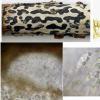
20-12-2025 23:08
Patrice TANCHAUDBonsoir, récolte sur sol sablonneux dans l'arri�

20-12-2025 15:47
Mirek GrycHi.These grew on pine wood that was heavily covere

18-12-2025 21:17
Pol DebaenstThe identification took me to Byssonectria deformi

15-12-2025 07:09
 Danny Newman
Danny Newman
indet. Rutstroemiaceae sp. on unk. fallen leavesMc

19-12-2025 10:10
Patrice TANCHAUDBonjour, récolte réalisée en milieu dunaire, a

18-12-2025 17:23
 Bruno Coué
Bruno Coué
Bonjour,je serais heureux d'avoir votre avis sur c

18-12-2025 18:07
Margot en Geert VullingsThese plumes were found on rotten wood.They strong

17-12-2025 18:35
 Michel Hairaud
Michel Hairaud
Bonjour à tous/Hi to everyone I am passing along
Coelomycete on Acer wood
Hans-Otto Baral,
21-06-2006 13:00
 Has anybody ever seen this coelomycete? It grew in Sweden (Skane, NP Söderasen, leg. Felix), on undecayed wood of a broken, 18 mm thick Acer branch obliquely hanging on the ground. Stromata 1.5-3 mm broad, 150-250 µm thick, pycnidial cavities 60-150 µm tall. Conidia *9.5-14 x 3.3-4 µm, conidiogenesis very probably phialidic.
Has anybody ever seen this coelomycete? It grew in Sweden (Skane, NP Söderasen, leg. Felix), on undecayed wood of a broken, 18 mm thick Acer branch obliquely hanging on the ground. Stromata 1.5-3 mm broad, 150-250 µm thick, pycnidial cavities 60-150 µm tall. Conidia *9.5-14 x 3.3-4 µm, conidiogenesis very probably phialidic. Zotto
Hans-Otto Baral,
05-08-2006 11:47

Re:Coelomycete on Acer wood
In the meantime, Walter Jaklitsch identified this fungus from my photos as the anamorph of a Diaporthe. In that genus the anamorphs are less diverse than the teleomorphs so that Walter prefers not to name this species from the anamorph alone. Actually, at least 5 Diaporthe species have been described on Acer. At the collection site there was Acer platanoides (natural) and A. pseudoplatanus (introduced), so one of these two Acer species must have been the host of this fungus.
According to Walter, a pseudostroma in the wood forming a so-called ventral zone (= black line in section) - as seen in our collection - is characteristic of many Diaporthe species, and is of course also found beneath the perithecia.
cheers
Zotto
According to Walter, a pseudostroma in the wood forming a so-called ventral zone (= black line in section) - as seen in our collection - is characteristic of many Diaporthe species, and is of course also found beneath the perithecia.
cheers
Zotto

